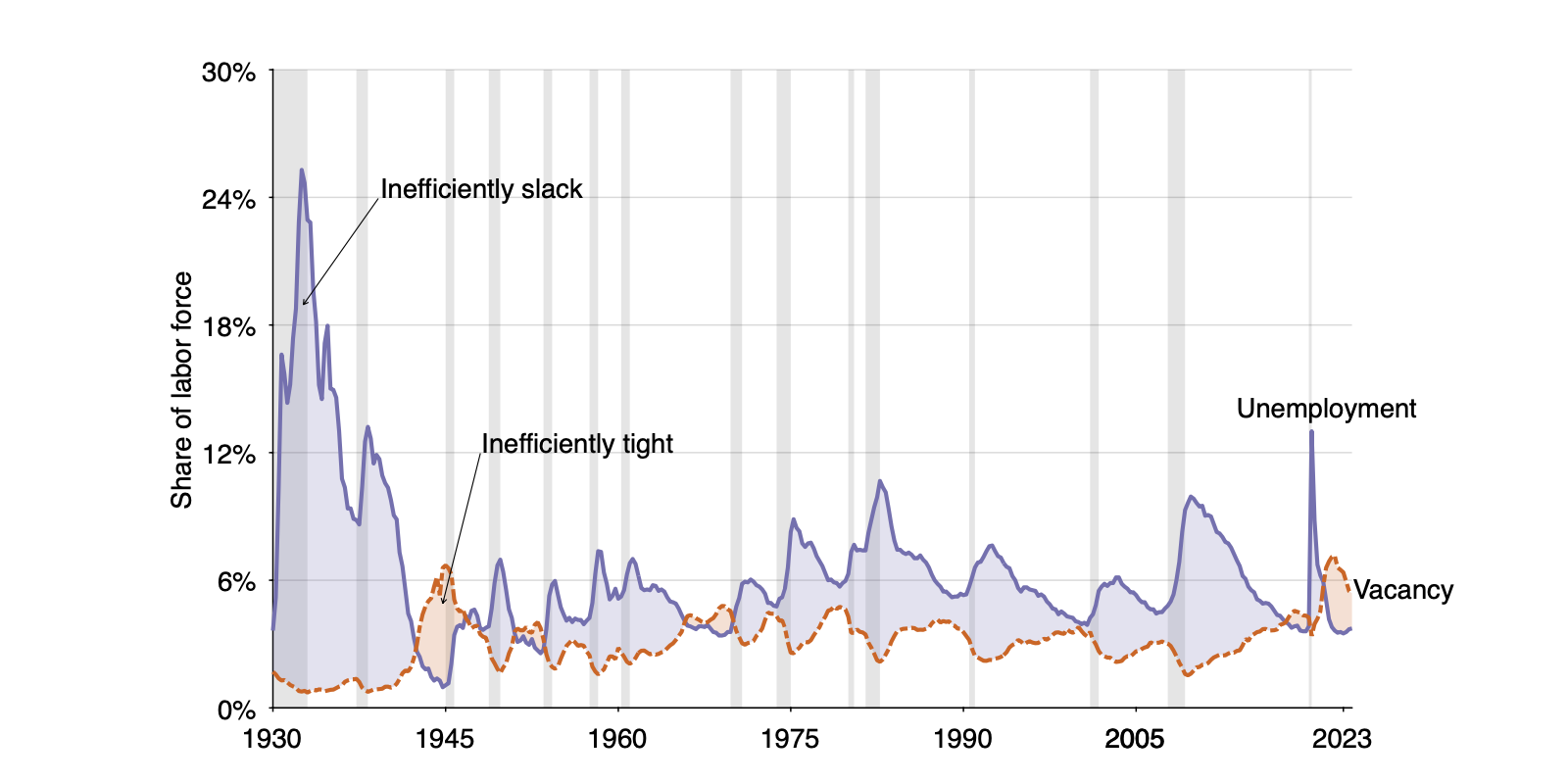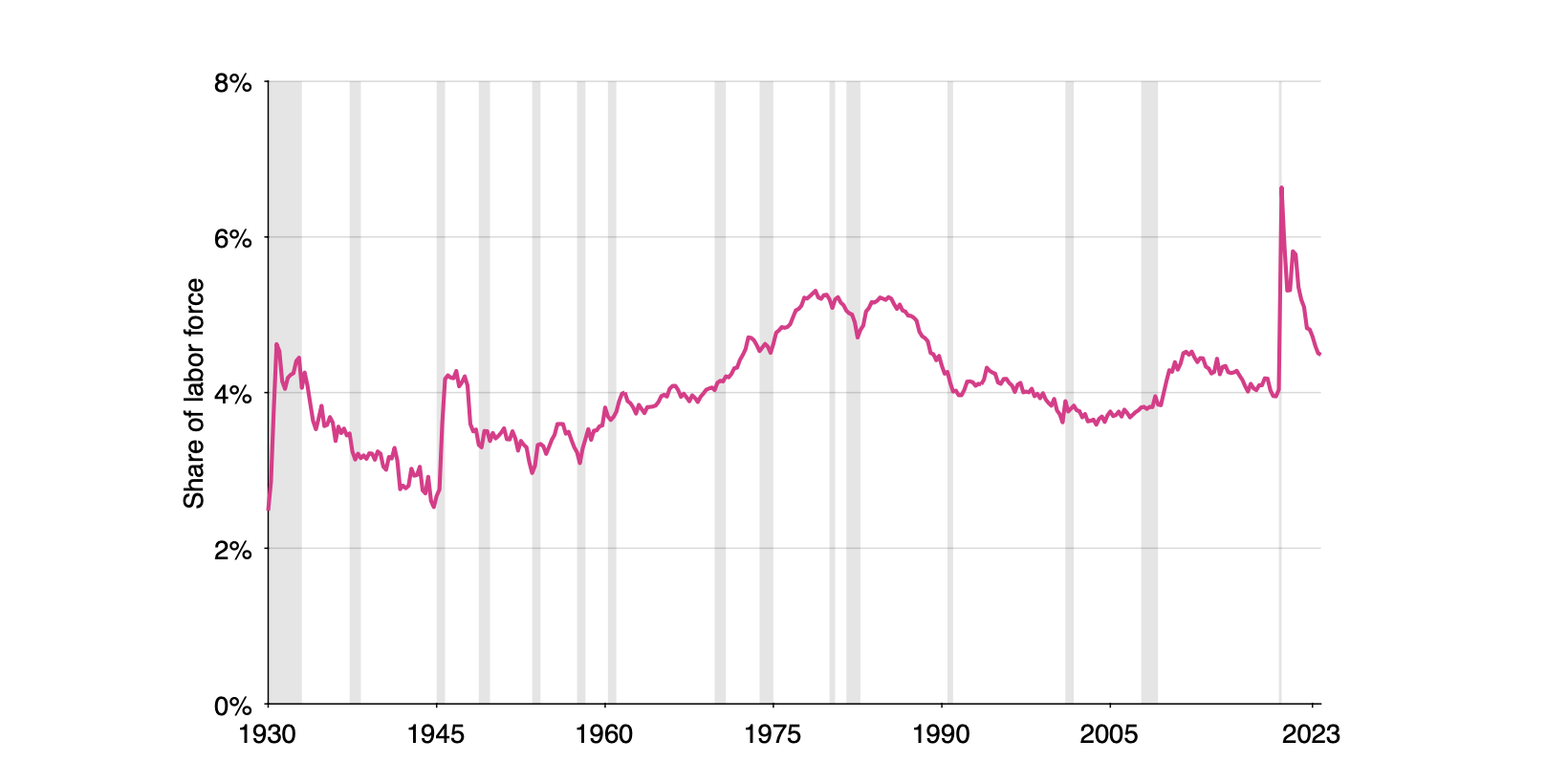Abstract
This paper aims to compute the unemployment rate $u^\ast$ that is consistent with full employment in the United States. First, it argues that the most appropriate economic translation of the legal notion of full employment is social efficiency. Here efficiency requires to minimize the nonproductive use of labor—both unemployment and recruiting. The nonproductive use of labor is measured by the number of jobseekers and vacancies, $u + v$. Through the Beveridge curve, the numbers of vacancies and jobseekers are inversely related, $uv = \text{constant}$. With such symmetry the labor market is efficient when there are as many jobseekers as vacancies ($u = v$), inefficiently tight when there are more vacancies than jobseekers ($v > u$), and inefficiently slack when there are more jobseekers than vacancies ($u > v$). Accordingly, the full-employment rate of unemployment (FERU) is the geometric average of the unemployment and vacancy rates: $u^\ast = \sqrt{uv}$. Between 1930 and 2023, the FERU averages 4.1% and is quite stable—it always remains between 2.5% and 6.6%.
Figure 10A: Unemployment and vacancy rates in the United States, 1930–2023

Figure 11A: Full-employment rate of unemployment in the United States, 1930–2023

Citation
Michaillat, Pascal, and Emmanuel Saez. 2024. “u* = √uv.” arXiv:2206.13012v3. https://doi.org/10.48550/arXiv.2206.13012 .
@techreport{MS24,
author = {Pascal Michaillat and Emmanuel Saez},
year = {2024},
title = {$u^* = \sqrt{uv}$},
number = {arXiv:2206.13012v3},
url = {https://doi.org/10.48550/arXiv.2206.13012}}